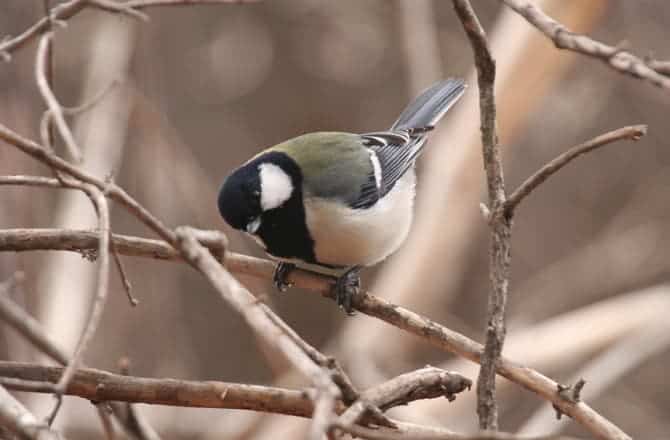The Japanese great tit, a bird closely related to the more familiar North American chickadee, uses complex calls in different contexts to convey different meaning. These “words” are stringed together to form compound messages — evidence of a sophisticated communication system based on syntax. This is the first time syntax has been shown to occur in non-human animals.

“We now have good evidence that animal communication systems share many of the basic properties of human language,” said Toshitaka Suzuki, lead author of the study appearing in Nature. “For example, mammals and birds can use specific call types to denote specific objects, and Japanese great tits can combine different ‘words’ to send a compound message.”
The researchers focused on specific notes tweeted by tits like A, B, C and D. When A,B and C are tweeted in this very order, the call instructs any tit tot “scan for danger”. The note D alone carries instructions to “approach me, the caller”. When ABC-D are tweeted in this order, the birds essentially convey “scan for danger, then come to me”.
When the researchers played this call to 21 Japanese great tits, most birds did as instructed surveying their surroundings then approaching the speaker. When the order of the chirps was reversed to D-CBA the birds did not respond. It probably sounded like nonsense.
By combine distinct elements of their vocalizations to convey compound meaning, the Japanese great tit seems to use syntax, according to the authors who published their paper in Nature Communications.
This skill isn’t innate. Nestlings seem to use a limited call repertoire associated with begging, hunger or distress. As they grow, the baby birds copy the parents and learn to vocalize and communicate like adults.
In fact, the Japanese great tit may have the upper hand over human speech. People can only produce one sound at a time, but the tit can control two sides of their syrinx independently so they can emit two distinct sounds at the same time.
Previously, studies on Campbell’s monkeys revealed that they have two specific predator alarm calls which they can change into a general distress call by adding a single suffix. In 2015, scientists showed that the aptly named blabber birds can arrange meaningless sounds to form messages. Just like the Japanese great tit, blabber birds seem to employ syntax although their behaviour wasn’t as rigorously demonstrated. Many other non-human animals may employ such sophisticated language. Whatever’s the case, every day it seems like the perceived gap between human and non-human behaviour is narrowed.






